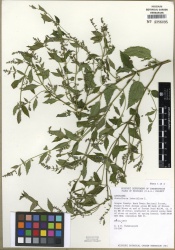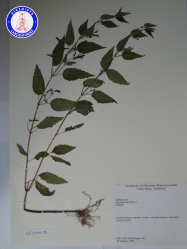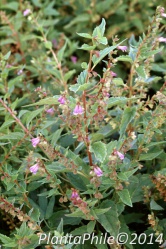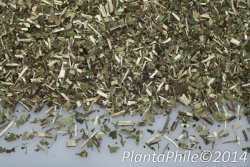Scutellaria lateriflora (flower)
(→add summary and link to ABC BAPP Lab Guidance) |
(→updates to ABC-AHP-NCNPR Botanical Adulterants Prevention Program program title) |
||
| Line 67: | Line 67: | ||
=Supplementary Information= | =Supplementary Information= | ||
| − | == ABC Botanical Adulterants Prevention Program Laboratory Guidance == | + | == ABC-AHP-NCNPR Botanical Adulterants Prevention Program Laboratory Guidance == |
| − | {{Botanical | source=ABC | + | {{Botanical | source=ABC-AHP-NCNPR Botanical Adulterants Prevention Program |
| − | | companyimage= | + | | companyimage=BAPP-logo-2018-2line-LOW2.jpg |
| companyURL=http://cms.herbalgram.org/BAP/LGD/SkullcapLabGuidanceDocument.html | | companyURL=http://cms.herbalgram.org/BAP/LGD/SkullcapLabGuidanceDocument.html | ||
| description=Skullcap (herb) (''Scutellaria lateriflora'') | | description=Skullcap (herb) (''Scutellaria lateriflora'') | ||
| − | | characteristics=This [http://cms.herbalgram.org/BAP/LGD/SkullcapLabGuidanceDocument.html | + | | characteristics=This ABC-AHP-NCNPR Botanical Adulterants Prevention Program [http://cms.herbalgram.org/BAP/LGD/SkullcapLabGuidanceDocument.html Laboratory Guidance Document] presents an overview and comparison of various analytical technologies and methods used to differentiate between authentic skullcap ingredients and non-authentic materials, with particular discussion of ''Scutellaria'' and/or germander ''Teucrium'' substitutions. Differences in flavonoid compositions are reviewed, and a variety of methods for authentication considered (including sample characterization via HPTLC, HPLC, UPLC, MS fingerprinting, NMR, and Near-IR hyperspectral imaging). |
}} | }} | ||
Latest revision as of 17:19, 17 October 2018
Contents |
Nomenclature
Scutellaria lateriflora L. Lamiaceae
Standardized common name (English): skullcap
Botanical Voucher Specimen
 |
|
|
|
|
Organoleptic Characteristics
|
Macroscopic Characteristics
|
Microscopic Characteristics
High Performance Thin Layer Chromatographic Identification
Supplementary Information
ABC-AHP-NCNPR Botanical Adulterants Prevention Program Laboratory Guidance
Skullcap (herb) (Scutellaria lateriflora)
General Characteristics This ABC-AHP-NCNPR Botanical Adulterants Prevention Program Laboratory Guidance Document presents an overview and comparison of various analytical technologies and methods used to differentiate between authentic skullcap ingredients and non-authentic materials, with particular discussion of Scutellaria and/or germander Teucrium substitutions. Differences in flavonoid compositions are reviewed, and a variety of methods for authentication considered (including sample characterization via HPTLC, HPLC, UPLC, MS fingerprinting, NMR, and Near-IR hyperspectral imaging).
Source: ABC-AHP-NCNPR Botanical Adulterants Prevention Program [8]
AHPA Known Adulterants List
Skullcap (flowering parts) (Scutellaria lateriflora)
General Characteristics AHPA recommends in its Known Adulterants list that appropriate steps be taken to assure that this raw material is free of the noted adulterant. Contact AHPA for additional information regarding relevant analytical methods or follow this link for more information.
Reported Adulterants Germander (Teucrium chamaedrys) flowering parts.
Source: AHPA Known Adulterants [9]
Sources
- ↑ MOBOT, Tropicos.org http://www.tropicos.org/Image/100007266
- ↑ Botanical Voucher Specimen Library, Alkemists Laboratories http://www.alkemist.com
- ↑ United States Dispensatory (1918)
- ↑ American Medicinal Plants of Commercial Importance (1930)
- ↑ United States Dispensatory (1918)
- ↑ PlantaPhile http://plantaphile.com/
- ↑ PlantaPhile http://plantaphile.com/
- ↑ ABC-AHP-NCNPR Botanical Adulterants Prevention Program http://cms.herbalgram.org/BAP/LGD/SkullcapLabGuidanceDocument.html
- ↑ AHPA Known Adulterants http://www.ahpa.org/
- Botanical
- Lamiaceae
- Media
- Voucher
- MOBOT, Tropicos.org
- Botanical Voucher Specimen Library, Alkemists Laboratories
- Organolepsy
- United States Dispensatory (1918)
- Macroscopy
- American Medicinal Plants of Commercial Importance (1930)
- PlantaPhile
- ABC-AHP-NCNPR Botanical Adulterants Prevention Program
- AHPA Known Adulterants



